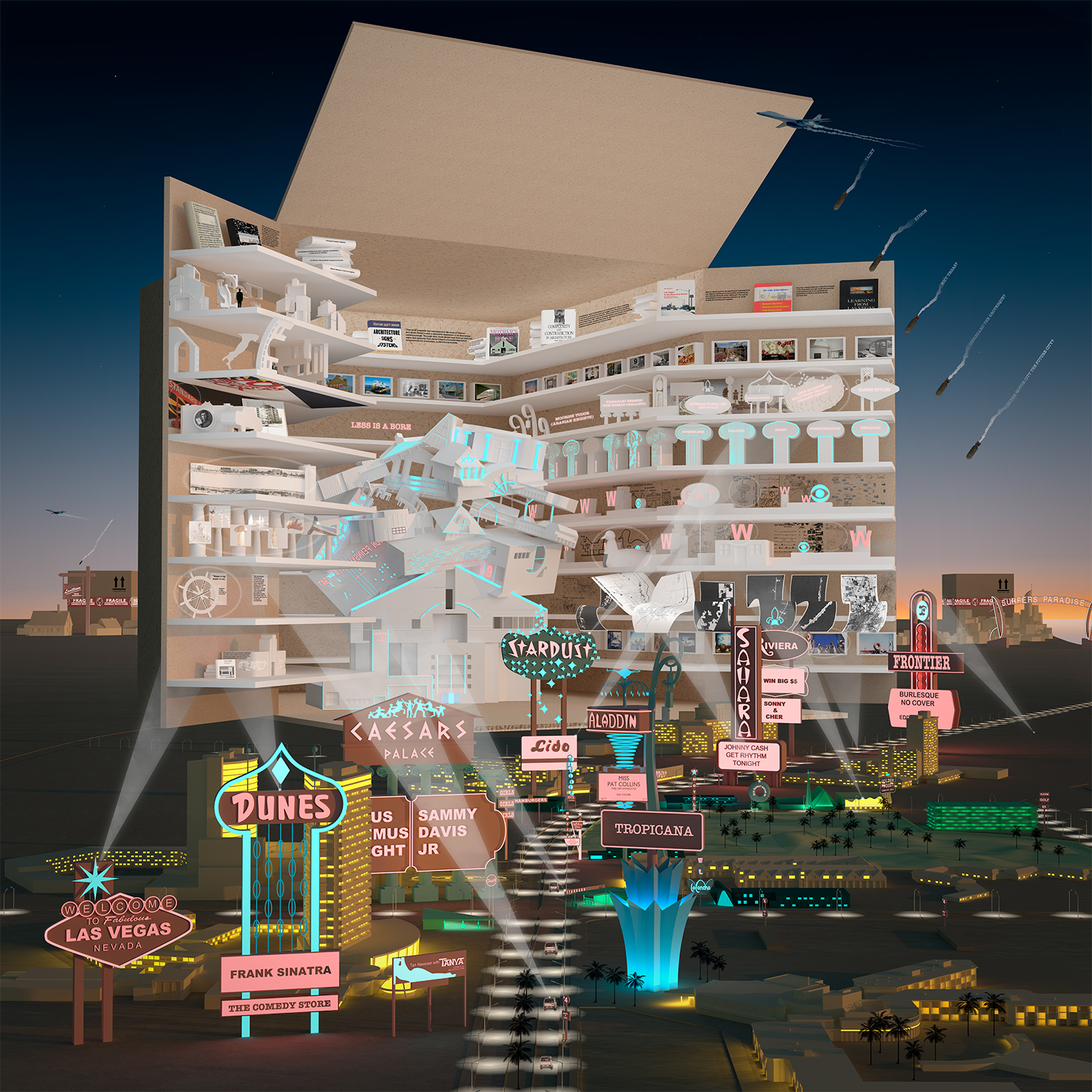Learning from Las Vegas Map
Project Details
| Date | October 2018 History + Theory, 2nd Year Semester 2 |
|---|---|
| Credits | James Sewell Joshua Wallace Alexander Moss Raphael Newell Lynus Wong Anthony Mollica |
| Type | Mapping Area of Study |
| Case Study | Learning from Las Vegas |
| Size | 1.6m x 1.6m |
| Institution | University of Technology Sydney (UTS) |
| Applications | Rhino 6, V-Ray, Adobe Photoshop |
Project Summary
The poster is a mapping exercise of the Learning from Las Vegas Studio in 1968, in which consisted of Steven Izenour, Robert Venturi, Denise Scott Brown, and nine accompanied students. Whilst some of the documentation methods have existed in the past, this studio pioneered in meticulously applying this documentation and analysis to the Age of American Car Culture and the often-overlooked banal everyday places. The purpose of the studio was to construct a pilot, in which analyses a broad scope on the nature and character of a given subject, in doing so provides blueprints to analyse any architectural subject. One of the many ideas that emerged from this studio is the construction of two categories in which all buildings fall under, ducks (symbols) or decorated sheds (signs).
Detailed in the poster, is a large carboard box revealing the research the Vegas Studio had undertook. That is precedent studies, text studies, photography, sketches, abstraction of ideas, maps, and the deconstruction of ornament and practicality. This, of course, was met with countless criticisms, including that is was "Tacky", "Kitsch", and that the studio disregarded the grotesque. Despite these criticisms, aspiring studios have used similar techniques to understand different subjects, such as "Learning for Levittown" (1970) and "Learning from Surfers Paradise" (1973-2013). As a result, this studio has greatly expanded the understanding of architecture, particularly through the post-modern lens.
